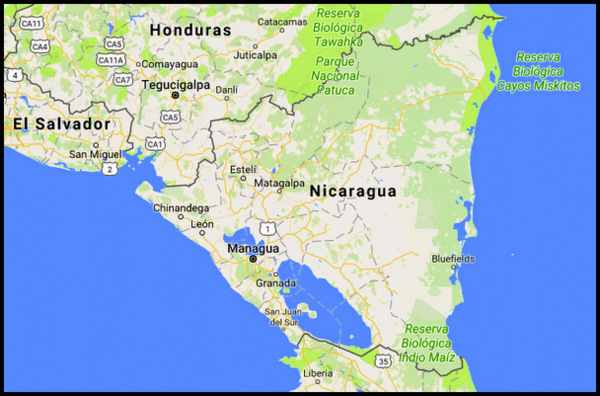 Introduction to Nicaragua
Introduction to Nicaragua
Nicaragua is one of seven Central American countries. It’s a wedge-shaped country situated right smack in the middle of the long, narrow Central American isthmus. With the wide side of its triangle on the north and tapering southward, Nicaragua has extensive coastlines on both the Caribbean Sea in the east and the Pacific Ocean on the west.
On the north Nicaragua is bordered primarily by Honduras, with a small border with tiny El Salvador on the Pacific coast. To the south of Nicaragua lies Costa Rica.
Most of country’s population, as well as most travel destinations in Nicaragua, lie in the flat western Pacific region, covering about one third of its land area.
Aside from a small wedge-shaped mountainous region in Nicaragua’s north central region (about ¼ of the land area), the remaining eastern third of the country is little inhabited and has few roads or other means of access. It’s primarily tropical jungle, with lots of rivers and wetlands and plentiful rainfall nine months of the year.
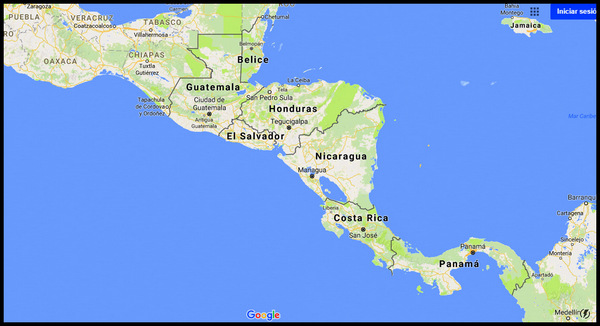 Brief Nicaraguan History
Brief Nicaraguan History
Like the other Central American nations and Mexico, the region now known as Nicaragua was invaded and colonized by the vast Spanish empire in the early 1500s. The Spanish ruled the entire region until the late 1800s, when it collectively gained independence then soon separated into the various nations we have today.
Since Nicaragua’s independence from Spain then Mexico in the late 1800s, Nicaragua has had a very tumultuous history, marked by various civil wars and long-term rulers, most of whom have been very corrupt. This has greatly inhibited Nicaragua’s economy, wealth and standard of living.
However, Nicaragua has been politically stable since the early 2000s. And in the last 10 years or so tourism has been growing steadily, particularly attracting young, independent budget travelers as well as surfers to its fantastic Pacific surfing waves.
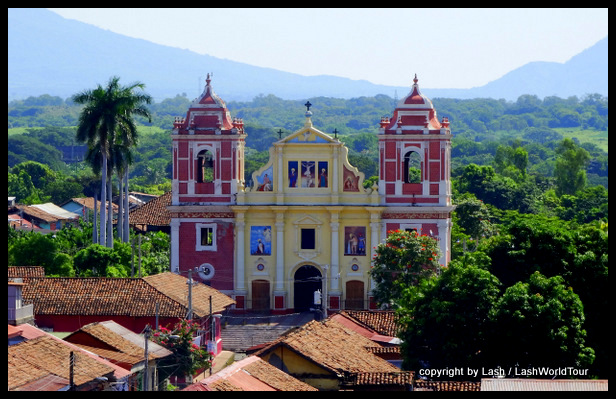
Iglesia de Calvario – Leon
Nicaragua for Travelers
Naturally, being the huge planner that I am, I’d read all about Nicaragua’s many attractions: gorgeous colonial towns, beautiful Pacific beaches, active volcanoes, crater lakes, idyllic tropical Caribbean islands and the central mountains with coffee plantations, a big canyon, waterfalls and hiking.
More specifically, Leon and Granada are Nicaragua’s two gorgeous colonial towns full of original architecture, including many churches and cathedrals.
Several volcanoes, some still actively spewing smoke, can be visited and summit-ed, most of them near Leon and Granada. One of Nicaragua’s trade-mark adventures among young travelers is Volcano Boarding, whereby you fly down the steep volcanic slopes on a wooden sled.
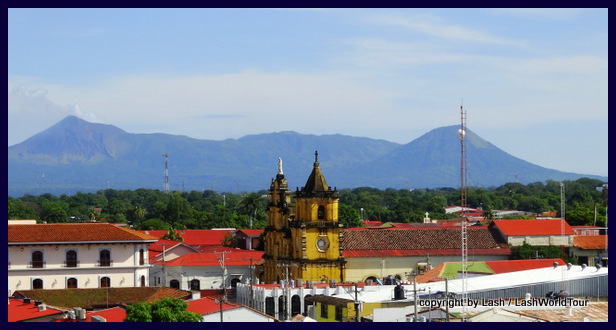
view of distant volcanoes near Leon – Iglesia de La Recolecion in center
Various surfing beaches all along the Pacific coast have been attracting surfers for years. Some spots are considered among the best waves in Central America.
Nicaragua also has eleven gorgeous crater lakes that can be visited for swimming, boating and staying.
While the Caribbean coast isn’t very accessible, it does have a few travel destinations. The star attractions are the remote Corn Islands, which still retain the little-developed, rustic tropical island paradise vibe.
Besides my own research, I’d also heard over and over again from other travelers and bloggers about how inexpensive and great Nicaragua is. Apparently, it’s the cheapest country for travel in Central America.
By the time I’d finished reading and hearing about all the fantastic places, I figured I’d need nearly three months to see and do everything! And Nicaragua was definitely one of the countries I was most excited to reach during my C American adventures.
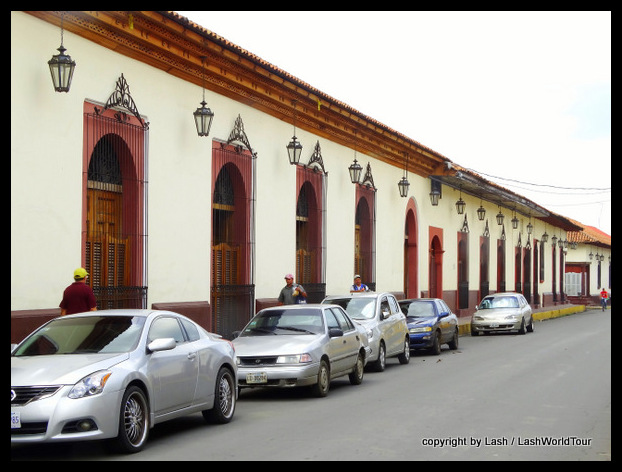
beautiful colonial buildings in Leon
My Adventures in Nicaragua to Date
…and now I’m here! I’ve only been here 10 days so far, and all of that in the gorgeous colonial town of Leon…aside from one day trip to the nearby beach of Las Pinitas to buff up my tan.
So far, I love it! The architecture is beautiful; food is plentiful, tasty and cheap; hostels are the cheapest I’ve come across in C America thus far; there are great museums and plenty of other things to do and see.
Nicaragua even has the dark roast coffee that I love, which is an amazing surprise. In this region of the world, I’ve discovered to my regret that it’s nearly impossible to find dark roast, even though most of these countries are major world-class coffee producers. Alas, everyone produces primarily medium roast.
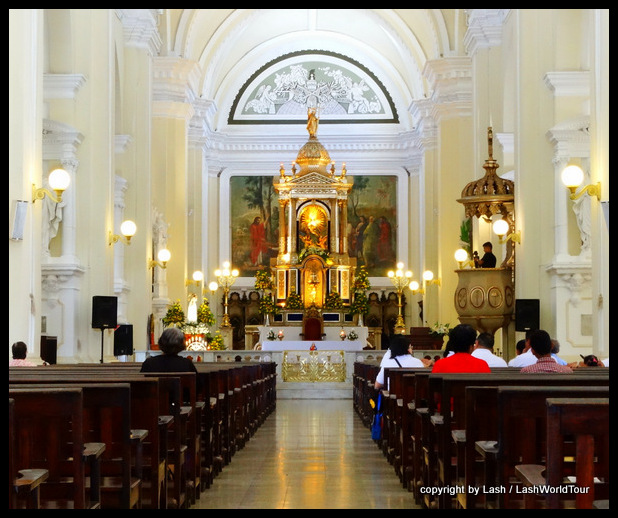
interior of Leon Cathedral
In Leon I’ve found a couple great little coffee shops, a downtown cinema showing the latest movies, music and film nights at a couple hip venues, a variety of tasty food, reasonably priced groceries and shops and, strangely, a string of second-hand American clothing shops. Who knew?!
Other interesting, relatively unique things I’ve noticed about Nicaragua since I’ve been here are: heaps of handsome colonial-style rocking chairs, lots of horses pulling wooden carts, billiards tables and the distinctive Nicaraguan hammocks at every hostel.
I’ve also learned that Nicaragua produces world-class cigars, Flora de Cana rum, sugar and quality chocolate.
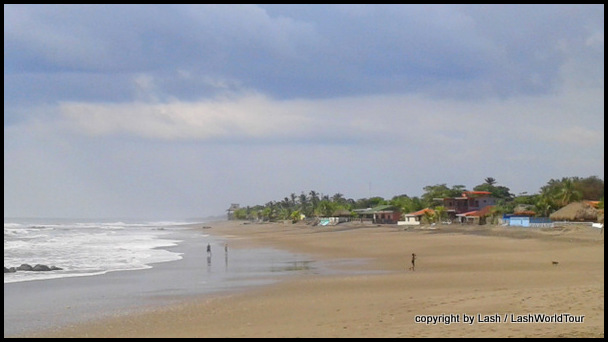
Las Pinitas Beach – near Leon
I could easily stay in Leon another week or two, wandering the streets admiring the charming architecture, making day trips and sipping espresso at my favorite cafe.
But I need to move on…next up, the next charming colonial town of Granada.
I’m pretty sure I’m going to love Granada just as much as Leon…and, in fact, all of Nicaragua… Let’s see!
You might also enjoy the following:
My Introduction to El Salvador
13 Surprising Facts About Guatemala
=================================================












 Hi! I'm Lash, an American nomadic world traveler who's been traveling solo since 1998. I’m passionate about traveling the world nomadically and then sharing it all with you. I hope to inspire you to travel the world, to entertain you with tales from the road, and to help you reach your travel dreams. Welcome!
Hi! I'm Lash, an American nomadic world traveler who's been traveling solo since 1998. I’m passionate about traveling the world nomadically and then sharing it all with you. I hope to inspire you to travel the world, to entertain you with tales from the road, and to help you reach your travel dreams. Welcome! 



